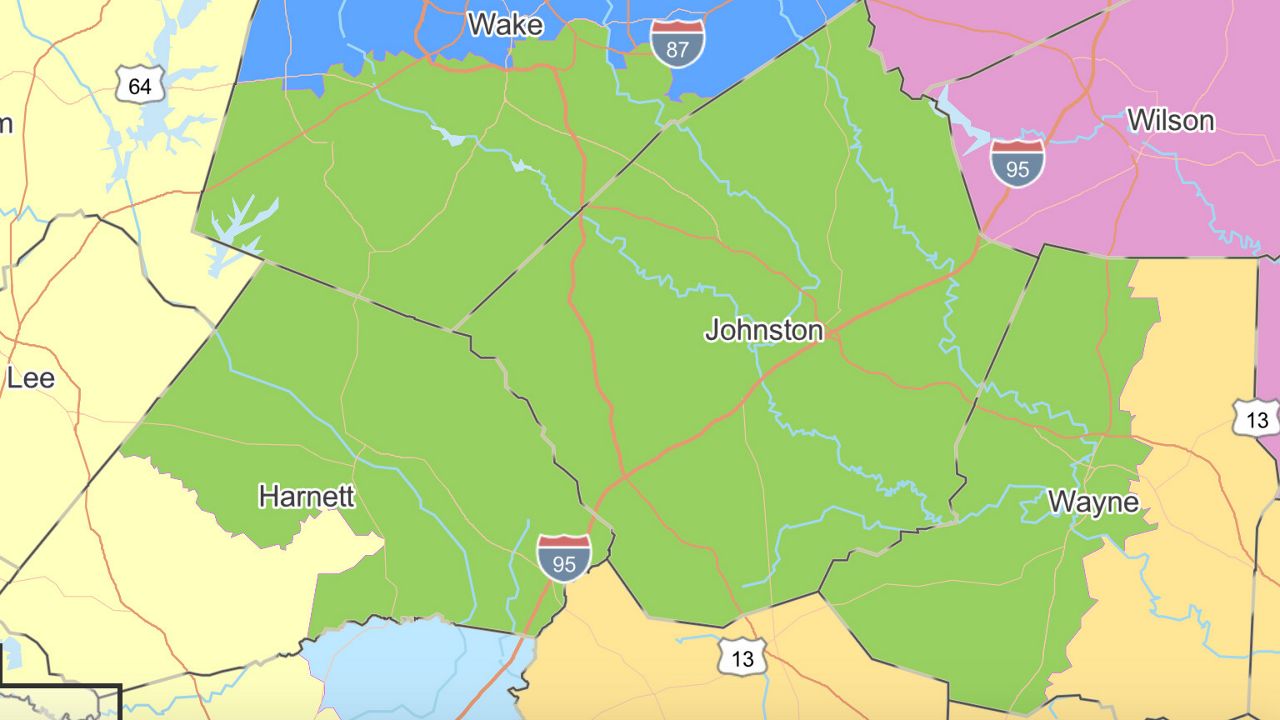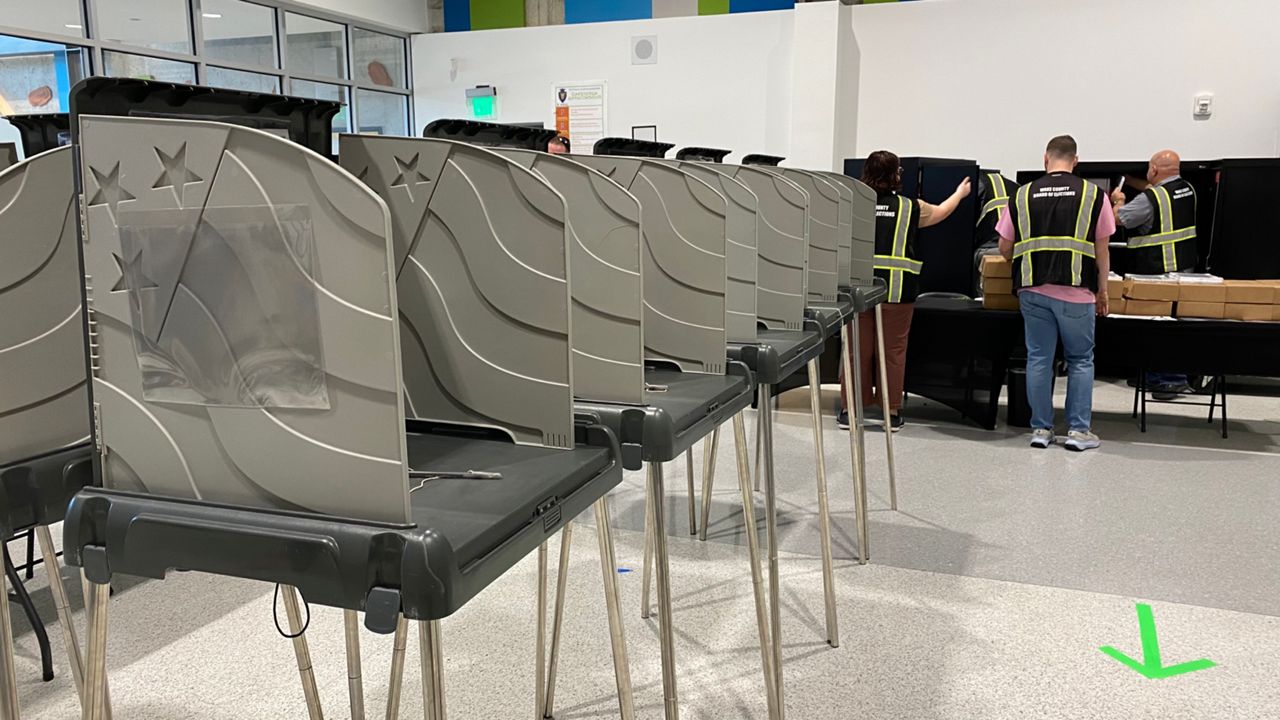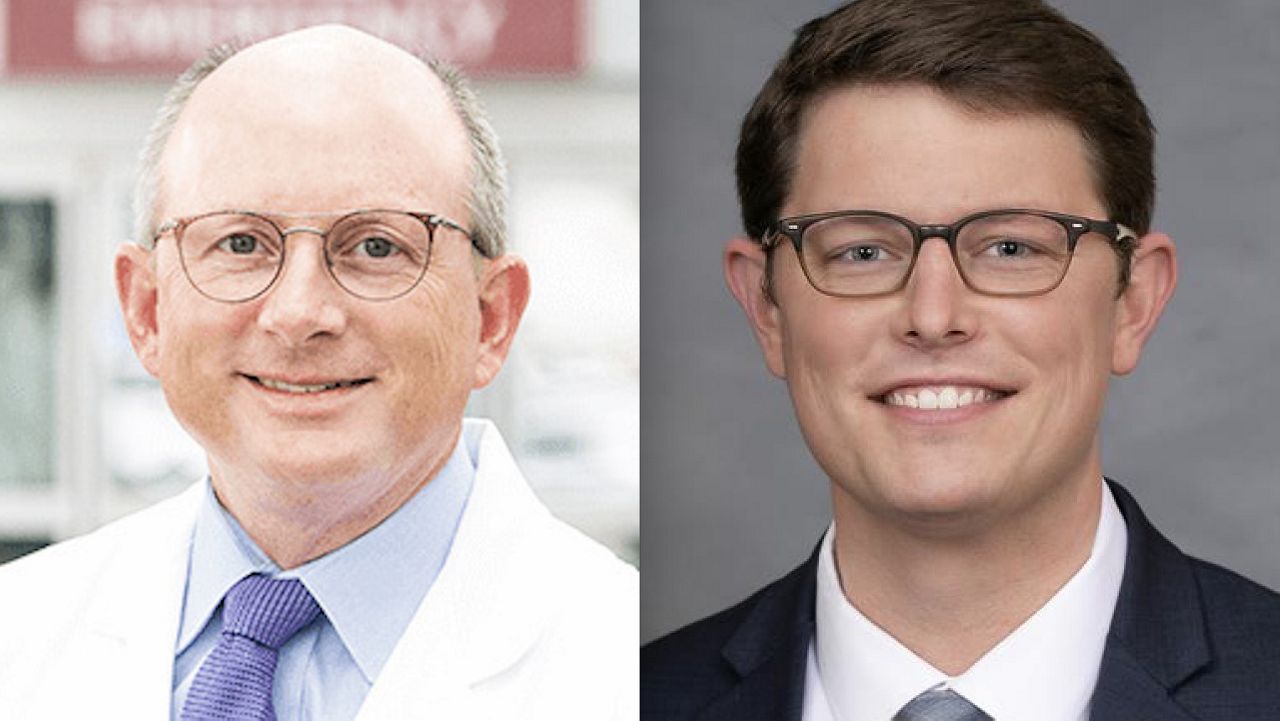The race for North Carolina’s redrawn 13th Congressional District pits 26-year-old Republican upstart Bo Hines against two-term Democratic state Sen. Wiley Nickel.
The race for the 13th District is the most competitive in North Carolina. The election is one of a handful of swing districts around the country that could decide the balance of power in the U.S. House.
Democratic House Majority Leader Rep. Steny Hoyer came to North Carolina Sunday to campaign for Nickel. A week before, Republican Rep. Kevin McCarthy, the House minority leader, appeared with Hines at a farm in Fuquay-Varina.
“North Carolina has always been very important, but to me, in this election it’s one of the most important states,” McCarthy said Aug. 9, standing alongside Hines with a tractor behind them. “It will determine whether we win the majority in the House and, I think, win the majority in the Senate.”
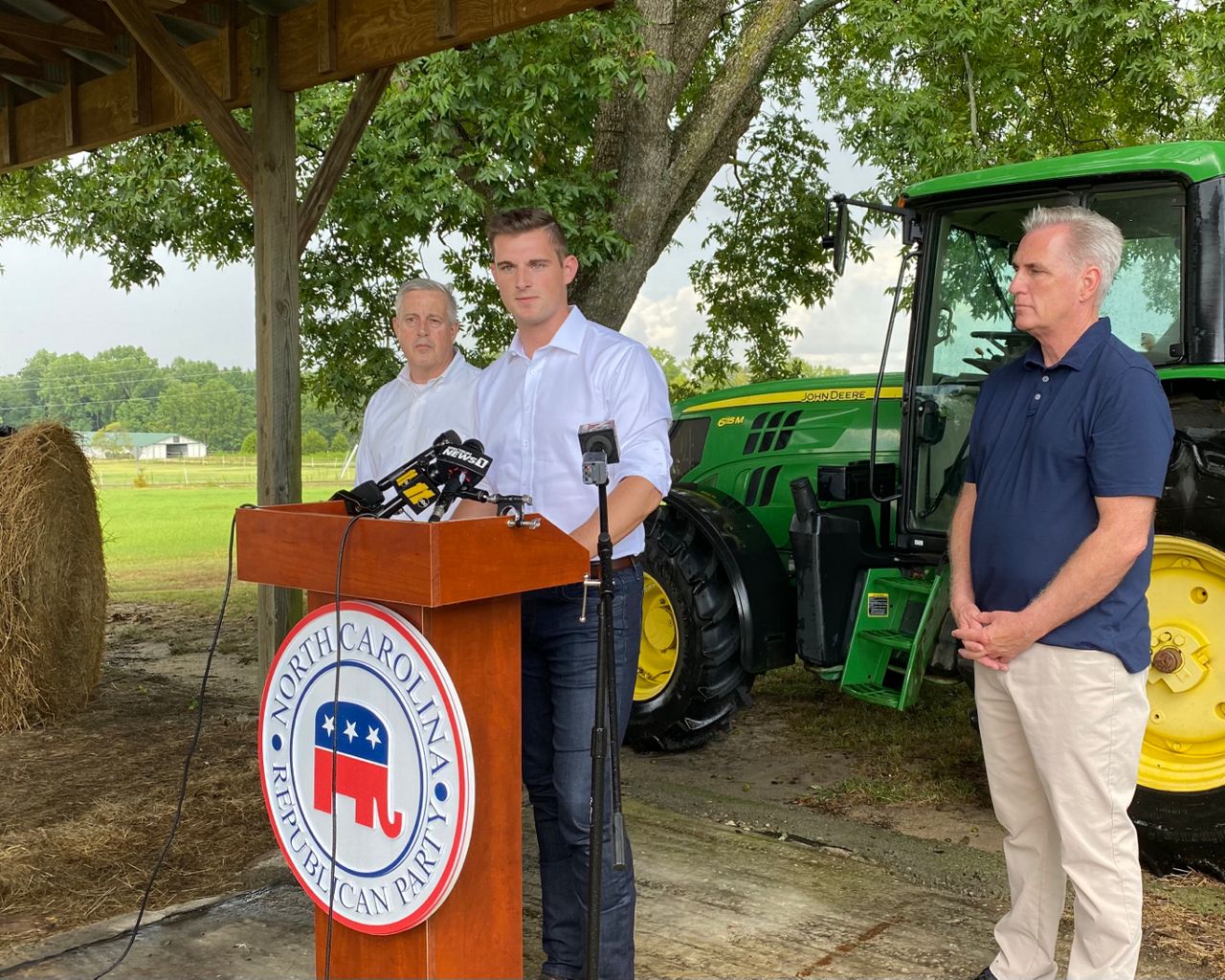
“North Carolina has always been a pretty bellwether state for where we’re going. But I will tell you, what I’m seeing in North Carolina today is exciting for Republicans,” he said.
The district stretches from Apex, in southeastern Wake County, south into Harnett County and east to Goldsboro. It’s an open race for the seat in Congress. Rep. Ted Budd, the incumbent, is running for North Carolina’s open Senate seat.
The district includes the fast-growing area around Raleigh. Johnston County, the heart of the mostly suburban 13th District, grew by almost 28% between 2010 and 2020, making it the fastest-growing county in North Carolina in the last census.
“This is a district that we believe is one of the fastest growing congressional districts in the country,” Nickel said in a recent interview. “That growth is going to be really important in this election.”
The court-drawn congressional district is solid purple, with a rough 50-50 split between Republican and Democratic voters.
“It’s one of these races that’s going to be competitive, but everybody gets a voice, every issue matters and the best ideas win. That’s the thing that’s most exciting for me,” Nickel said.
Many of the issues the candidates point to are the same as the rest of the country: inflation, housing costs, the price of a gallon of gas and health care.
Hines campaigned his way to the Republican nomination with the endorsement, and funding, of former President Donald Trump and the conservative Club for Growth super PAC. He beat out a full ticket of more traditional Republican candidates.
When Hines filed to run in the district, he was still living 100 miles away in Winston-Salem.
Since the primary elections in May, Hines has fought off comparisons to North Carolina’s other well-known young Republican: Madison Cawthorn.
“We had Madison Cawthorn embarrassing our state. We rejected him. And now we’ve got Madison Cawthorn version 2.0 in this district,” Nickel said recently.
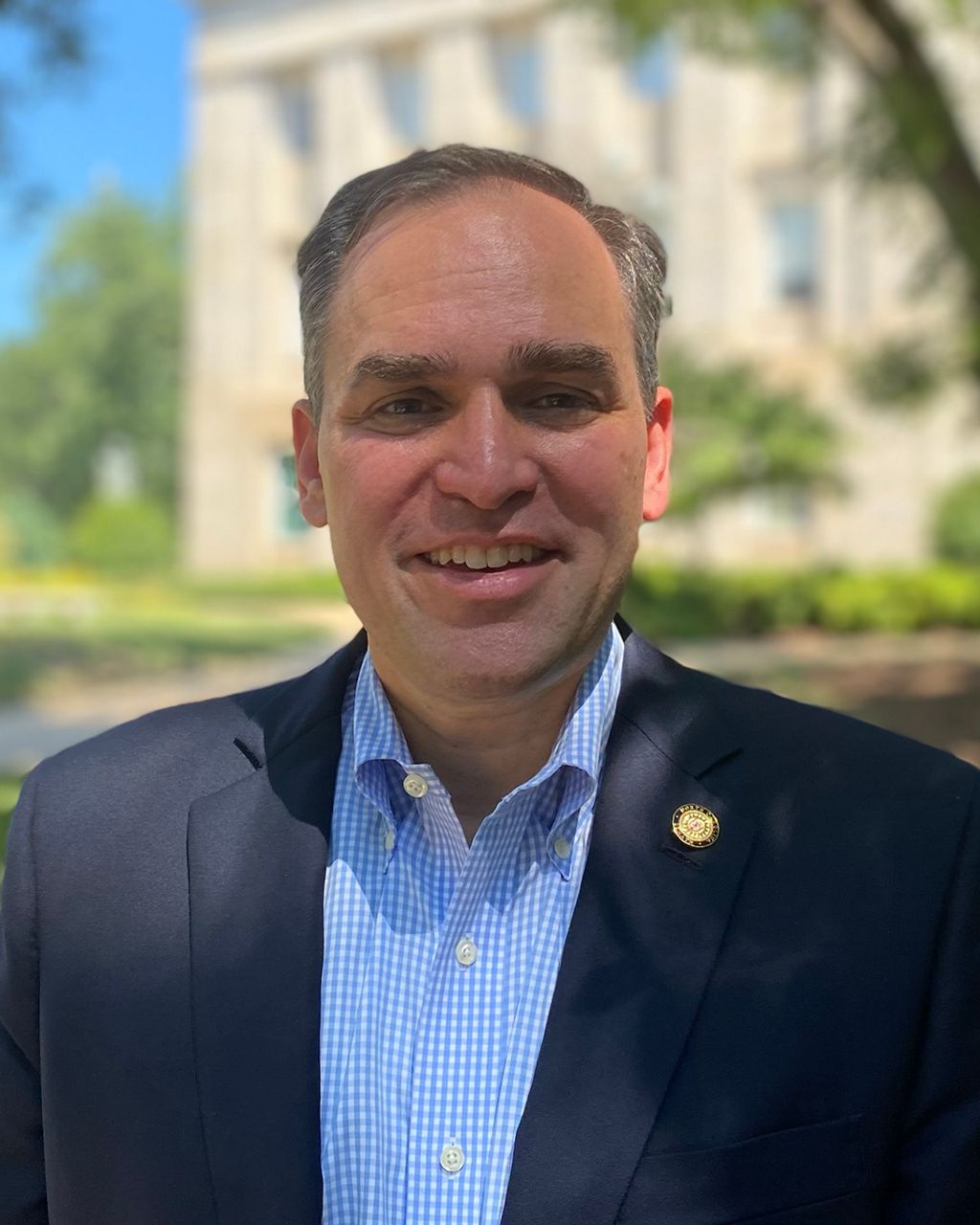
But Hines rejects that characterization.
“We’re radically two different people. We have different experiences, different backgrounds, we’ve lived different lives,” Hines said. “Our similarities are our age and some of the beliefs that we have.”
“I am my own person, I have a lot of my own expertise,” he said.
The candidates break down on the issues about how people might expect. Hines opposes abortion (with limited exceptions), opposes teaching critical race theory in schools, supports gun rights, wants tougher immigration policies and a return to Trump’s “American First” trade policies.
Nickel, for his part, said he wants to protect abortion rights nationally. He said he supports gun rights, but also wants universal background checks and safe storage laws.
He said his record at the state senate shows he’s a centrist who knows how to compromise with Republicans.
“I want to compromise. I’m going to stand up to extremists on both sides, on the right and on the left to get things done for this district. And that means making compromises to move bills through to help my constituents,” he said.
“When you start talking less about the hot button issues but more about how you’re going to work through to the center, you get people’s attention,” Nickel said, and he hopes that message will resonate with swing voters come November.
Campaigns for the race has already gone into the millions for the two candidates.
Through the primaries and up to the end of June, Hines raised more than $1.6 million. Much of that went to a costly primary campaign, leaving him with about $100,000 cash on hand at the beginning of July, according to the candidate’s latest campaign finance reports.
As of June 30, Nickel had raised more than $1.7 million and had more than $500,000 cash on hand, campaign finance reports show.
Both candidates loaned their own campaigns more than $900,000, the records show.
Both candidates have also brought in money from national organizations, including the Save Democracy PAC giving $10,000 to Nickel.
For Hines, the Club for Growth has contributed $38,000 and the House Freedom Fund gave his campaign $26,700.
About 51% of the contributions to the Hines campaign came from inside North Carolina, with about 49% coming from out of state, according to data compiled by Open Secrets, a nonpartisan group that tracks campaign finance.
For Nickel, about 55% of donations to his campaign came from in-state, and about 45% from outside North Carolina, according to Open Secrets.
Money will continue to pour into the 13th District from inside and outside North Carolina. The election is one of just a couple dozen around the country that could decide if Republicans can take control of the U.S. House of Representatives.
With 78 days left until Election Day on Nov. 8, the campaign in the 13th District is just starting to heat up.
Voters in the district will need to get used to their mailboxes getting packed with campaign mailers, political ads taking over their television sets and top-name leaders from both sides of the aisle coming to town to campaign for their candidate.





